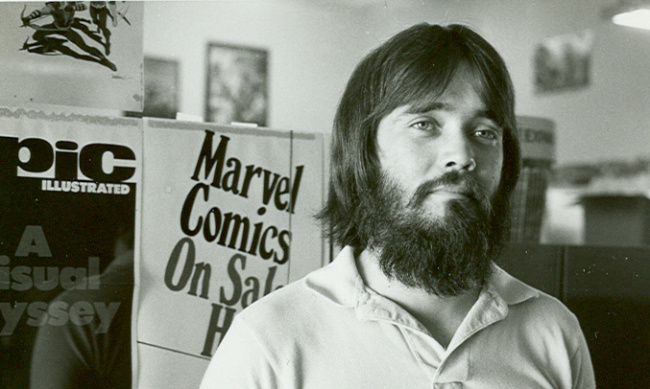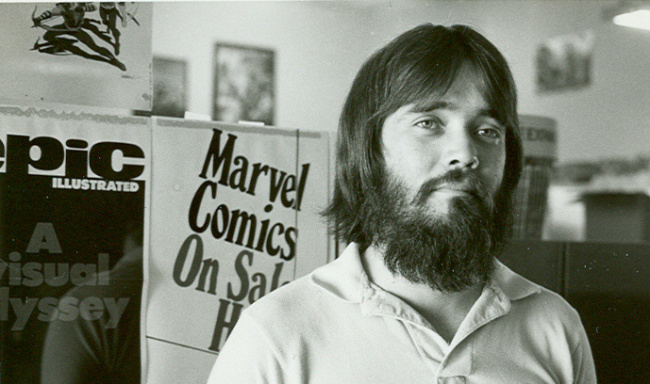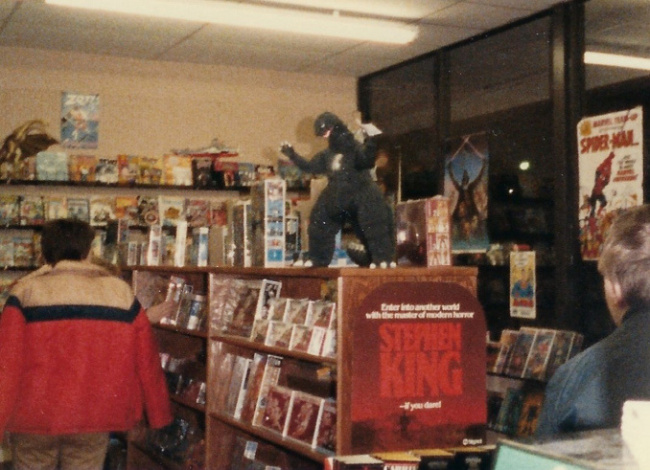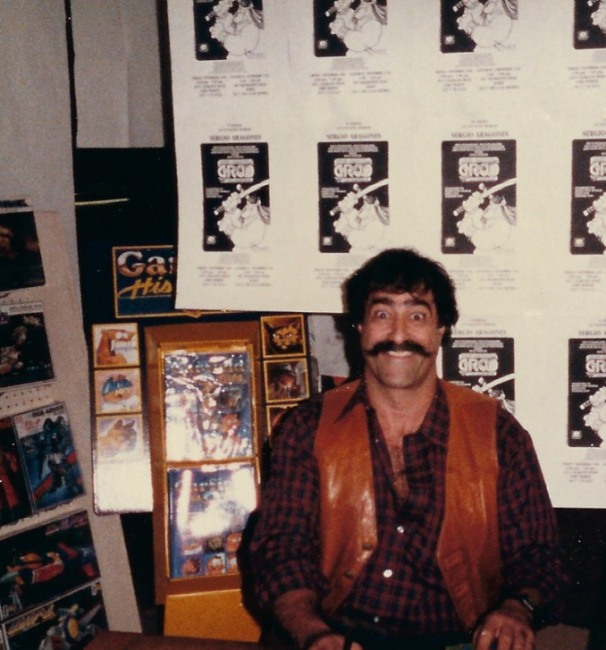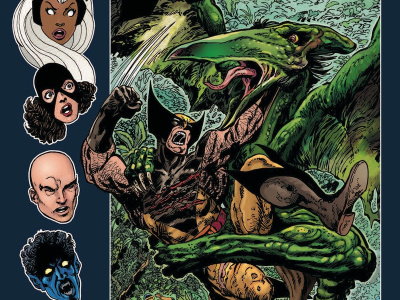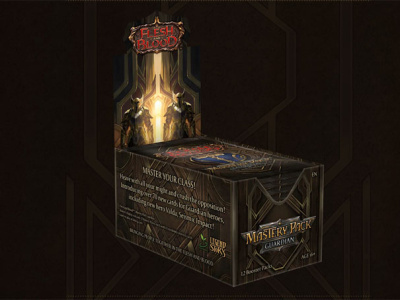Wayne was one of the early retailers we interviewed for our article on the creation of the Direct Market (see "How the Drive to Get Comics Created the Direct Market").
This interview was conducted as part of ICv2’s Comics Direct Market 50th Anniversary celebration; for more, see "Comics Direct Market 50th Anniversary."
To watch a video of this interview, see "ICv2 Video Interview – Bob Wayne."
Wayne shared more of his memories of the early days of the Direct Market in his keynote address to the 2023 Diamond Retailer Summit, which he shared as a guest column (see "Bob Wayne’s 2023 Diamond Retailer Summit Keynote").
I'm here with Bob Wayne, a longtime figure in the direct market [who spent] a number of years at DC, from the late 80s into the new millennium. Before that is a period that we're going to talk about today, which was his experience in retailing comics and with the early days of the direct market. Maybe you can start out by telling us a little about your earliest experience selling comics.
My earliest experience selling comics would've been… I had been acquiring comics by going to used bookstores and even sometimes just buying multiple copies off the newsstand new, but the first time I tried to sell comics would have been after I had an account with Phil Seuling’s Sea Gate. That was at a summer convention in Dallas in 1974. That was when I was selling new comics, and old comics as well, but I was primarily getting—the new comics I was now getting from Sea Gate as account number 40. Before that, I would just cherry pick what I found in used bookstores or even on the newsstand based on my youthful assumptions of what people were going to want later or overlook.
One of my conversations with Neil Adams was when I told him that he was the first person who I started buying extra copies of off the newsstand, because I was quite certain that they were so different that people wouldn't necessarily buy them when they first saw them, but they would want to buy them later.
Were you buying from Sea Gate every month? And was it Sea Gate? I think it was Phil Seuling then, wasn't it?
Yeah. I was buying from Phil. Every month, you would get basically a very simple printed list in the mail that would have, organized by publisher, it would be the title, the issue number, and the cover price, and you knew you were going to get a 50 percent discount. That was all the information you had.
I remember calling Phil when Savage Sword of Conan #1 was listed, saying, "Can you tell me something more about this?" He was like, "It's Conan. It's a number one. What do you need to [know]?"
Thank you, Phil.
He knew the commercial aspects of the product, I guess. Were you also buying from the other distribution channel at the time or not?
At that point, I was occasionally buying from the two local ID [independent magazine distributor] wholesalers. I had friends that worked basically as paperback rack jobbers, who knew the IDs, and I knew people who were in charge of putting mass market paperbacks into the spinner racks all through the local airports and things, and that type of stuff. So I had a way to get into the IDs relatively early. Sometimes I would just go through their returns pile and buy them non‑returnable, whatever I could get.
I was still doing that after I opened retail stores. I remember that I didn't order enough of the first issue of Thor that was drawn by Walter Simonson and written by Walter. I spent a couple of hours a few weeks later going through all the returns from the newsstands in the area and just was like, "No, no, I'll take all these. I'll take all these. These will be fine."
You said in that initial period, you were also buying new comics off the newsstand. What was newsstand distribution like then? Could you find what you wanted?
I'm from Fort Worth, Texas. The newsstand distribution here was perhaps not the same as in other markets. There was a terraced level. Some outlets had one spinner rack and that was the basic DC and Marvel stuff, and some Harvey stuff. You really wanted to find a retailer who was moving enough comics that they had two spinner racks, because those were the retailers who got everything. You would not have known that a lot of things even existed if you were only shopping at some place that only had one spinner rack.
How did you find out about Phil Seuling?
I think there was something about him in the fanzine The Comic Reader that Paul Levitz was doing, but I'm not certain about that. It's one of the few fanzines I was looking at the time, and that sticks in my head, but I'm sure that Paul can tell us, at some point, if he ran something about it or not. If he didn't, then I found out some other way.
You said you were selling at conventions. What was that like? How many a year were you doing? Were they all in the Texas region?
I was doing three or four a year, and they were either in Texas or in Oklahoma.
Did you carry anything besides color comics? Did you carry fanzines or undergrounds?
At the point where I was just doing convention sales, I carried some, I don't know if I would call it "fanzine stuff." The professional‑looking fanzine type of stuff, semi‑pro things, I would carry some of those, but I didn't really start carrying that type of stuff in depth until I opened up a brick‑and‑mortar store in 80.
Let's talk about that. How did you decide to open a store? Why did you open a store?
I opened a store because the stores in Fort Worth at the time all seemed subpar. I had the example of what Buddy [Saunders] was doing at Lone Star, and I also had been to London and had seen the embryonic Forbidden Planet. I had been to San Diego, and I had kind of been adopted by Bill Leibowitz [owner of Golden Apple Comics] as a mentor. I called Bill a number of times for advice during my early years in retail. So with a great deal of cojones, I opened a retail shop in the same triangle of business as two existing shops in town.
Where were those?
There was one called Tanner Miles Comics and Things, and I don't remember the name of the other one. I was doing very odd things like having parking that was easy to get to in front of my location and having inventory that lasted more than a couple of days on new comics and things.
I quickly picked up the lion’s share of business. Ramping up to that, I was buying primarily from the Schanes brothers out of Pacific Comics because I was trying to not leave a footprint with the local distributor, Longhorn, so that people wouldn't know that somebody was buying up a lot of comics in the neighborhood and start wondering what I was doing. I was trying to be as under the radar as possible.
This was obviously during a period of the growth of direct distribution, so you had options. At some point, you switched from Phil, and there was even a local option: I think Austin, Longhorn was from, right?
Yeah. Longhorn was originally Austin then they eventually had a Dallas location. Then they merged in with Cavco from Kansas City, and then that became a larger thing over time, but at that point, I believe they were primarily in Austin.
You were buying from Pacific. How did the comics get to you? Did they get shipped first to California and then back to you?
Yeah.
Was there a race to the market, or was everybody getting things about the same time?
The stuff I was buying from Pacific wasn't things I was going to sell. I was just building up inventory. So I wasn't concerned about the timeliness of them. Then I was a Glenwood account, and Glenwood was able to get stuff to me quick because of their proximity to Sparta.
That's Sparta, Illinois, where most comics were printed.
At that time, yup.
I did open more stores. I had partners, and then we came to a parting of the ways. I sold out of my share of the business and called up people who had been talking to me for years asking if I would like to work here or there and set up a very busy day in New York City.
That led to your eventual many years at DC.
It did. I had a meeting in the morning with Paul Levitz, and I felt pretty good that they were going to offer me a job on staff. Then I went and had lunch with Carol Kalish at Marvel, and Carol offered me a job on staff at Marvel. Then I went back to DC and had a meeting at editorial and pitched a mini‑series called Time Masters that was to be a revival of Rip Hunter, Time Master.
The best career advice I received probably was from Carol. Carol said, "I'd love to have you at Marvel, but if you take a job at Marvel, you'll be one of several people who understands why people buy comics, how they buy comics, and how to motivate them to buy more. But if you take that job at DC, there's nobody there who understands that right now. You can probably stay there as long as you'd like."
[Laughs] And you did.
I did. I stayed until the New York office closed, and I was there almost 28 years. That was Carol's advice, and I ran with it.
Just to wrap up this discussion of the retailing era for you, you obviously had met publishers during your time as a retailer, beginning with the earliest days in the '70s through mid‑'87 when you started working for DC. What was the contact with publishers like? Were they interested in what was going on in comic stores, and were they trying to help?
My initial contact with publishers was when my friend Lewis Shiner and I were doing a fanzine called Tales from Texas, and we put on a convention one year. We swore we would never put on a convention again, but the contacts we were making with the fanzine and doing interviews with people and such opened up a whole lot of doors, and a lot of people that ended up on my Rolodex, and that I've known ever since that time.
I saw Roy Thomas when he was the guest of honor a couple of years ago at the Robert E. Howard Days in Cross Plains, Texas. He was telling me, "Yeah, I went to this restaurant, right before I came down there, and I feel like I've been there before."
I said, "Yeah, Roy, you were there before. I took you there after the convention where you were one of our guests in 1976. "That was where you and Mike Friedrich and Lewis Shiner and I helped plot out an issue of FF because it was behind on the deadline, and we came up with the villain, the Texas Twister, who was a guy who was hit by a tornado in Texas." He is like, "No wonder the restaurant seemed familiar."
Any reflections on that period of retailing and how things changed and how the direct market changed the business?
One of the things that drove change to me was when Marvel began experimenting with their Marvel graphic novel line, so you ended up with things with a longer shelf life, higher production values, and a way to showcase properties and talent. I think that made it more talent‑centric, talent‑focused.
It wasn't like having a run of 10 issues of a comic where at that point, you would have two fill‑ins or two reprint issues in the middle of the run and interrupt the flow of it. I sold more copies over time of the first Marvel graphic novel, The Death of Captain Marvel, than I did on a lot of periodicals that were coming in and out. It wasn't all the first week. It was more like week in and week out, people would just be coming in and buying that as long as I had them available.
That's one of the embryonic things that people started to notice, that there could be some items with a longer shelf life than just, "Issue 173 is here. We can take 172 off the rack and send it back to the distributor." Having things with a spine and a long shelf life started to refocus everybody on how that could work.



